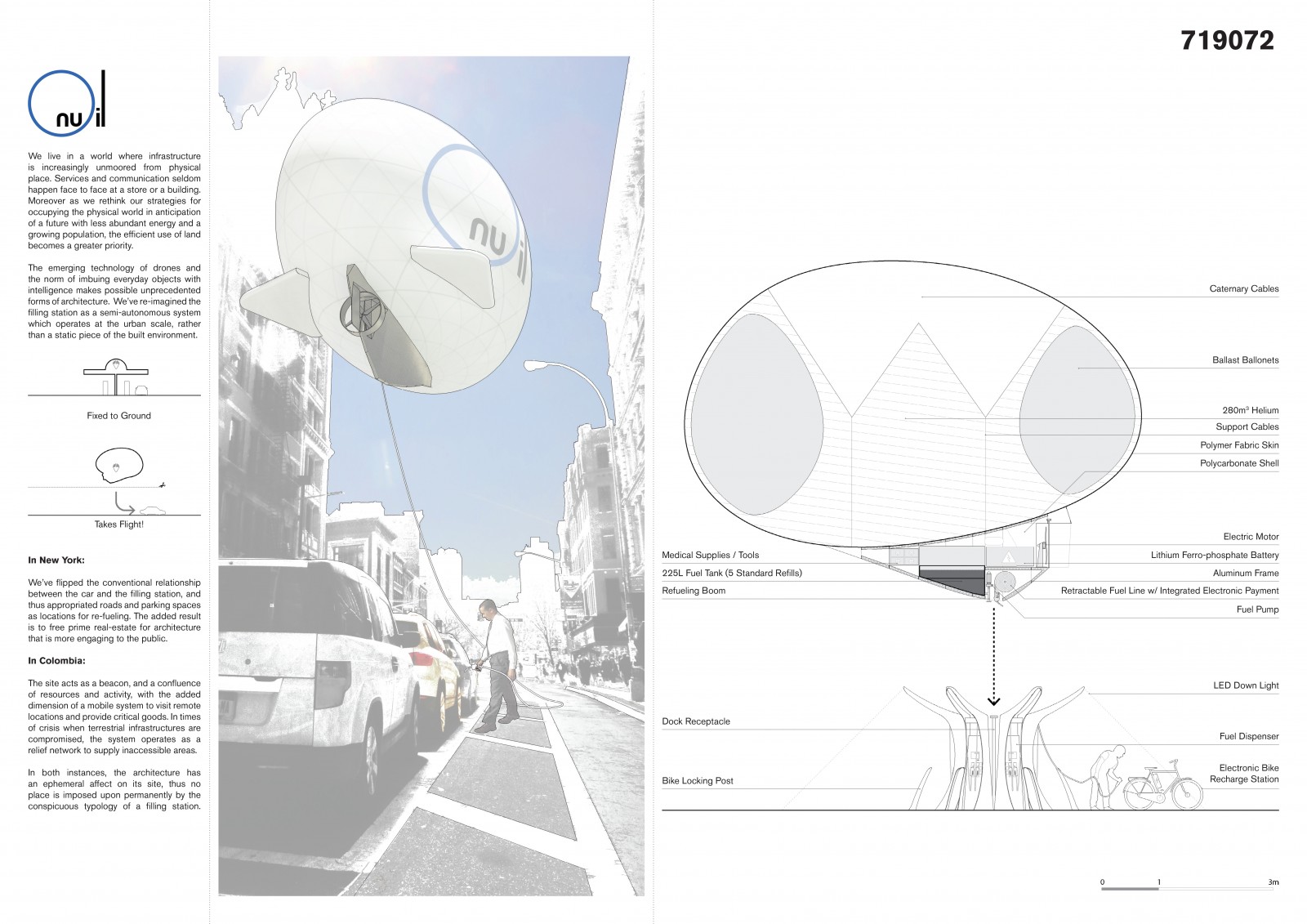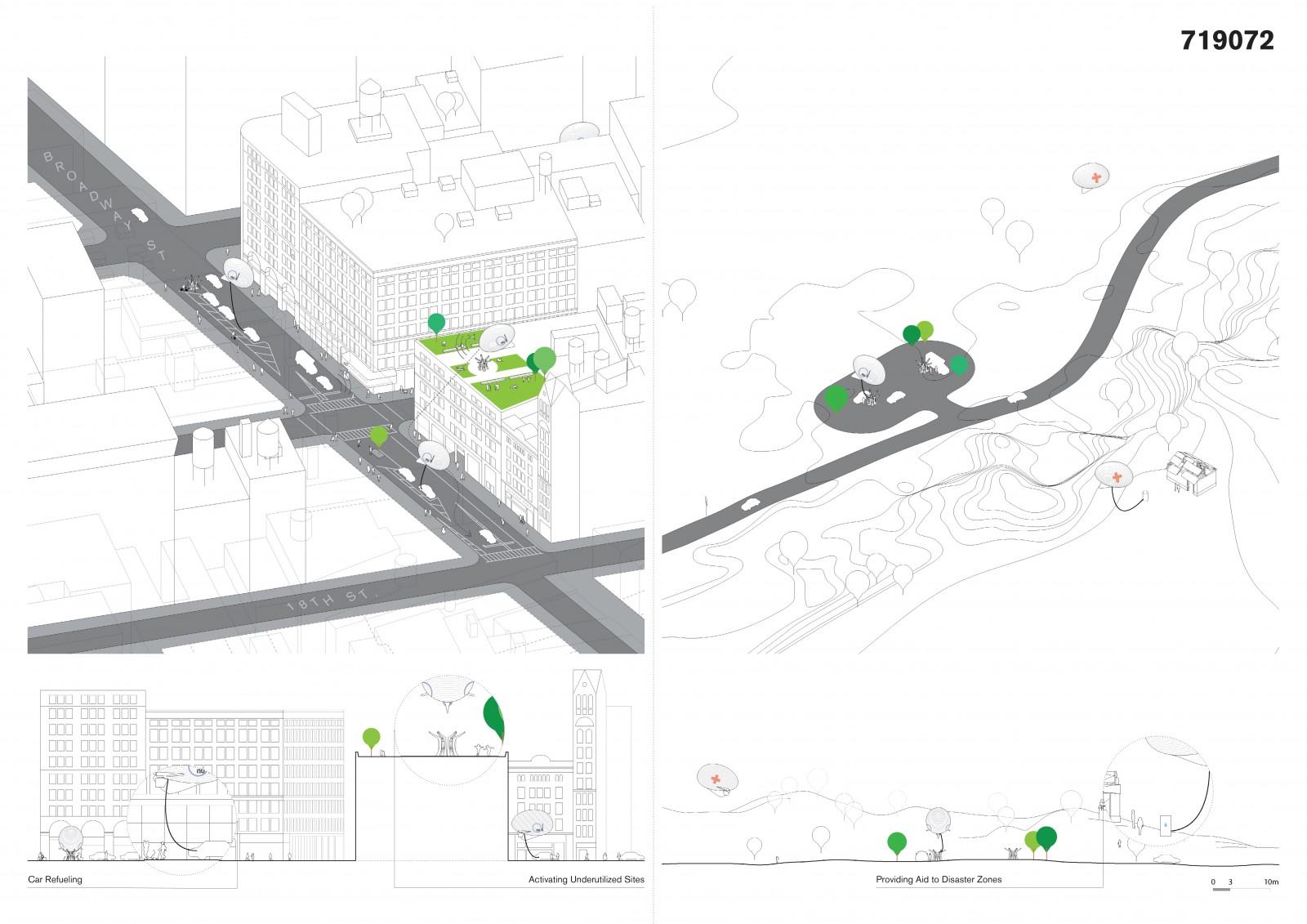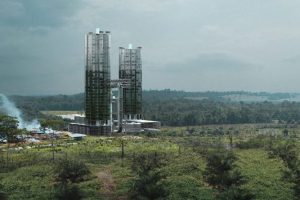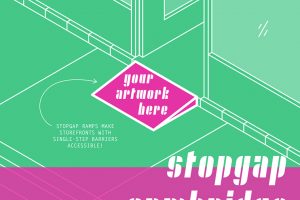We would like to congratulate Felix Yang and Thomas Noussis who were recently awarded 1st Prize in Combo Competition’s Filling Station(s). The competition challenged participants to rethink refueling and to modernize the universal language of filling stations. The brief asked them to envision aesthetically pleasing and highly functional models that can both adapt to diverse locales but also speculate on future conditions. While at first, the question may seem one dimensional, when taken in the context of our evolving systems of transportation, increasingly urbanized cities and changing modes of fuel production, the fueling station becomes a complex typology necessitating radical design thinking. For the full competition brief, jury comments and other award winners, visit the Fueling Station(s) website.
Felix Yang and Thomas Noussis’s proposal entitled Nu Oil caught the judges attention by, “…not only envisioning a new architecture for filling stations, but an entirely new method of distribution. By challenging the actual concept of refuelling, this proposal at once disappears the typical filling station and adds a ‘futuristic’ one, full of potentials.” Take a look at their competition entry below.

Nu Oil
Project Brief:
We live in a world where infrastructure is increasingly unmoored from physical place. Services and communication seldom happen face to face at a store or a building. Moreover as we rethink our strategies for occupying the physical world in anticipation of a future with less abundant energy and a growing population, the efficient use of land becomes a greater priority.
The emerging technology of drones and the norm of imbuing everyday objects with intelligence makes possible unprecedented forms of architecture. We’ve re-imagined the filling station as a semi-autonomous system which operates at the urban scale, rather than a static piece of the built environment.
In New York:
We’ve flipped the conventional relationship between the car and the filling station, and thus appropriated roads and parking spaces as locations for re-fueling. The added result is to free prime real-estate for architecture that is more engaging to the public.
In Colombia:
The site acts as a beacon, and a confluence of resources and activity, with the added dimension of a mobile system to visit remote locations and provide critical goods. In times of crisis when terrestrial infrastructures are compromised, the system operates as a relief network to supply inaccessible areas.
In both instances, the architecture has an ephemeral affect on its site, thus no place is imposed upon permanently by the conspicuous typology of a filling station





Leave a Reply